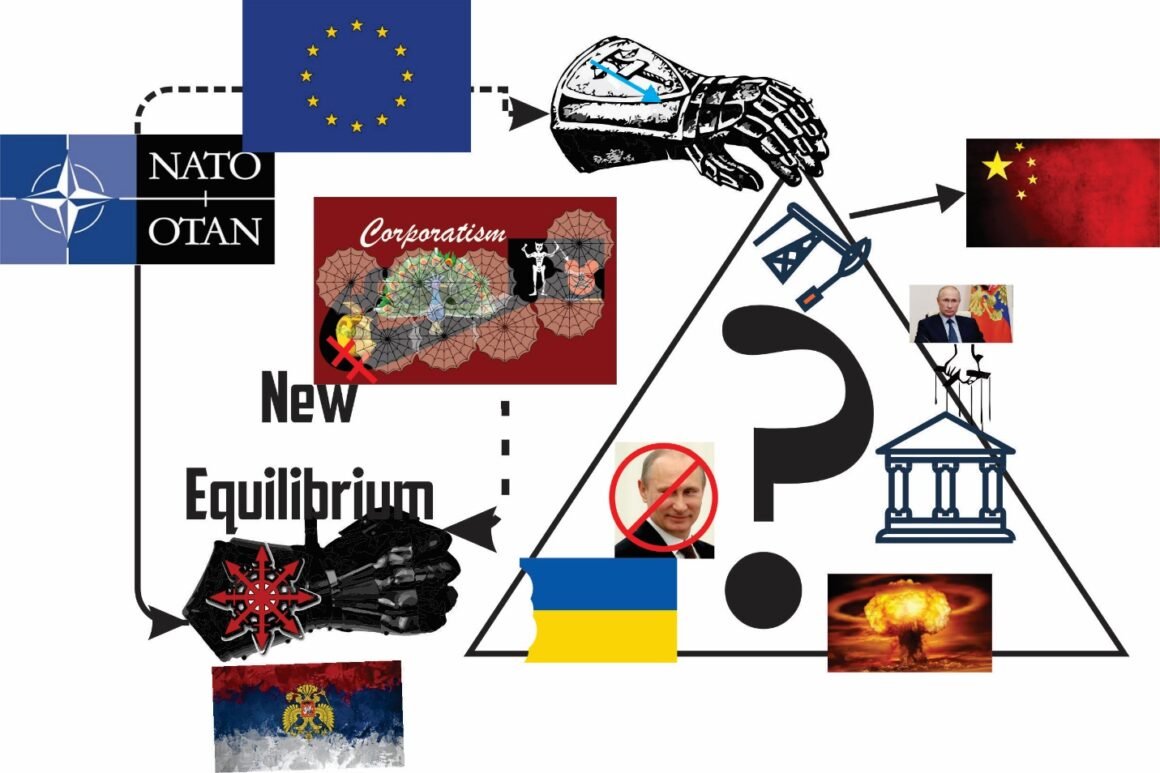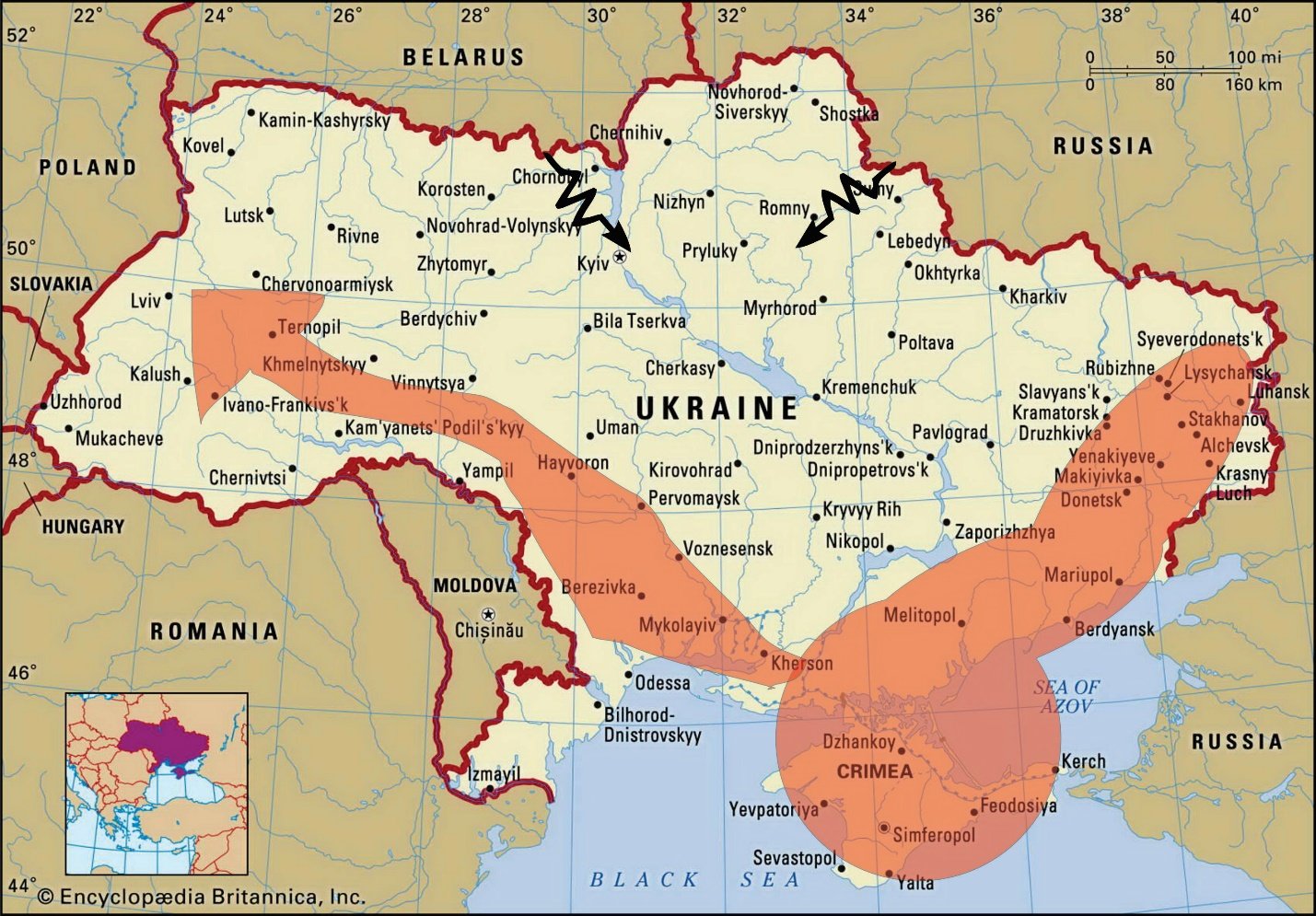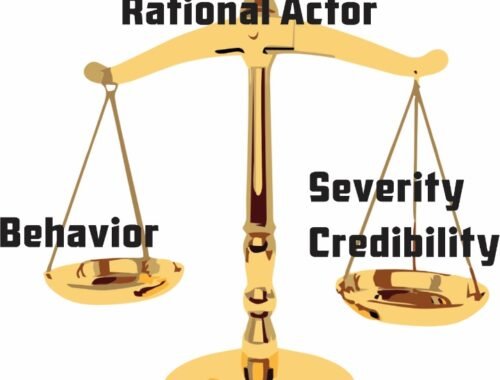
Thoughts on Ukraine Part 11: New Equilibrium
Figure New Equilibrium Issues
The figure above starts as a section of the New Equilibrium portion of the Conceptual Framework developed in Part 1. I have added elements based on developments over the last week. As the central question mark shows, there is still a great deal of uncertainty in what form a new equilibrium will take. Some aspects are getting clearer, while others are just as murky.
I have added in NATO and the EU. NATO will remain a source of both friction and order/support. Even if Ukraine does not enter NATO, Russia will have concerns over it—unless there is a new regime in control of Russia.
Several people made calls to remove Putin. The most visible is Senator Lindsey Graham. Alex Konanykhin offered a $1,000,000 reward for his removal. The sanctions bite has a few oligarchs turning their back on Putin as well. While a Putin removal is far from certain, the possibility is higher than when the war started.
Corporations are now exerting their power and ceasing or suspending operations in Russia. The Corporatism icon shows this effect. While perhaps good at the moment, it also should make us think for a moment. Who do the multinational companies (MNC) owe loyal to? Clearly, the ones owned by the corporatist states like Russia and China owe their loyalty to the state. But many are not owned by states and have increasingly thin ties to the countries where they were founded. The Corporatism icon shows interlocking webs. How much do the leaders of these corporations discuss actions and coordinate them? As they see the power they have to influence and shape a major state’s behavior, what do they do next?
The US government just announced a boycott of Russian oil. To what effect? Oil is fungible and can move anywhere. If the US and perhaps Europe do not buy it, there is a strong demand for it in China and elsewhere. And where will the US get oil to replace the Russian oil? Venezuela? That props up and failing socialist state. Is that an intended effect? Could another effect be a stronger relationship between Russia and China?

Figure Potential Russian Military Course of Action
As we look at the actual combat, a host of analysts focus on the Russian slow advance and problems. The Russian military seems to have a host of problems, from logistics, to command and control, to communications, and synchronization. But it has not stopped. Its southern operations creep closer to solidifying Russia’s hold on Crimea and Donbas.
But they could also break out to the west toward the L’viv resource basin—and the Polish border. Russia could perhaps conduct fixing attacks in the north around Kyiv and other large cities to hold down Ukrainian forces and bypass these strong points to come up from the south. Ukrainian forces Figure 2 shows this potential option. It could be both the most dangerous and the most likely Russian course of action.
What makes this even more interesting is the status of Moldava. Moldava condemned Russia’s invasion of Ukraine and has accepted Ukrainian refugees. But it has an interesting relationship with Russia. However, it has a “frozen conflict” from the breakup of the Soviet Union:
The territory occupied by the Transnistrian independent authority is located within the internationally recognized borders of Moldova. The Transnistrians are primarily supported by the Russian Federation, which maintains a military presence in the region. For all intents and purposes, it is “Little Russia,” a fact which is reflected in the import and export of all significant non-perishable goods (Vlas, 2021.) Although Transnistria continues to fall under Moldovan jurisdiction, life in the territory is regulated by the legislation adopted by the secessionist authorities and is solidly Russian speaking (Ibid.) Transnistria Conflict
Potentially, Russia could unfreeze this conflict. Moldova has an interesting history. It was once Bessarabia and taken from the Ottoman Emire. It became part of Romania and then in 1940 Romania ceded it to the Soviet Union. Like Ukraine, Moldova has a relationship with NATO, but is not part of it.
If Russia can accomplish this course of action, it could:
- Force Ukraine to sue for peace with Russia’s terms.
- Assimilate Donbas and Crimea.
- Extract favorable terms for resource control and purchase of Ukrainian companies by companies controlled by Russia.
- Create a puppet regime or at least a friendly Ukrainian regime.
Time is ticking. There is a race between Russia’s military actions and the effect of sanctions and corporate boycotts on Russia. Will sanctions and boycotts force a Russian regime change or will a Russian attack from the south towards L’viv force Ukraine to sue for peace under terms favorable to Russia?





